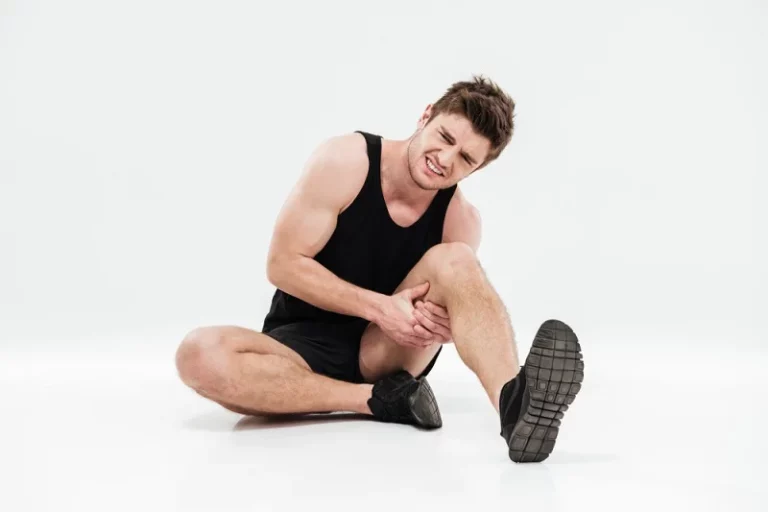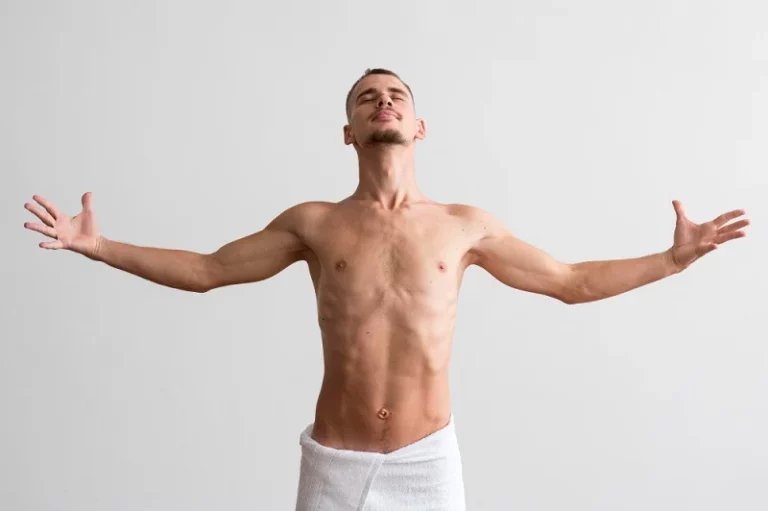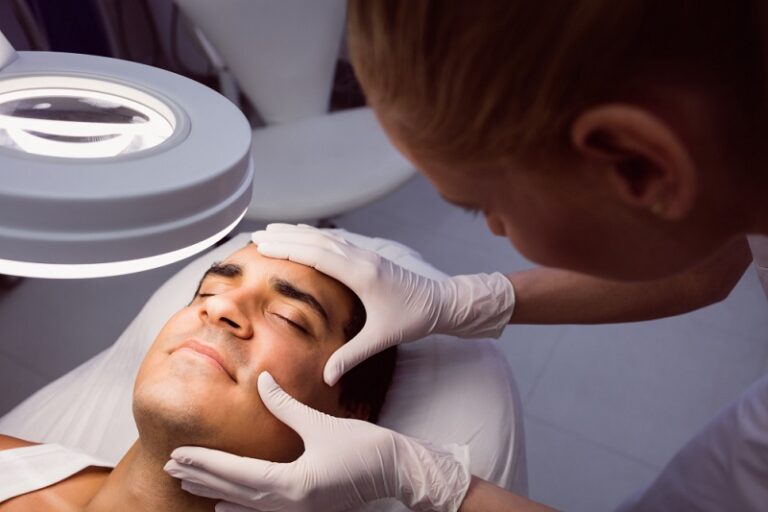Whole Body Cryotherapy
A whole-body cryotherapy is a form of extreme cooling exposure for the entire body. This therapy involves standing in a chamber filled with nitrogen gas at temperatures between -110°C to -140°C for about 2-4 minutes. The goal of whole-body cryotherapy is to trigger the body’s natural healing mechanisms and provide relief from various conditions, similar to using ice packs or water immersion to treat a frozen limb.
One of the benefits of whole-body cryotherapy is that it can be done in groups, making it an excellent addition to training programs. Cryotherapy group sessions are becoming increasingly popular among athletes and fitness enthusiasts who want to enhance their performance during exercises.
By exposing their bodies to extreme temperatures through cold water immersion or ice packs, they hope to improve their endurance, reduce inflammation, and recover faster from muscle soreness with cooling techniques.
Cold Immersion Therapy
Repetitive cryotherapy, including cold water immersion and ice packs, can also be used for muscle recovery after intense physical activity. Many athletes use repetitive cryotherapy to alleviate sore muscles, reduce musculoskeletal injury caused by exercise-induced microtrauma, and speed up recovery by reducing inflammation and swelling.
While whole-body cryotherapy has many benefits, there are also some risks associated with this treatment. Frostbite is a potential risk if the skin is exposed to extreme cold for too long or if the temperature inside the chamber drops below the recommended levels.
Following safety protocols when undergoing whole-body cryotherapy, including wearing protective clothing and limiting body cryotherapy exposure durations is essential. For those who prefer alternatives, ice packs, cooling, and water immersion can also effectively reduce inflammation and soreness after exercise training.
Another option for cold exposure therapy is cold water immersion (CWI), where individuals immerse themselves in cold water instead of using a chamber filled with nitrogen gas. CWI, along with ice packs, has been shown to have similar effects on inflammation reduction and muscle recovery as whole-body cryotherapy but may be less risky overall.
Temperature reductions through cooling techniques like CWI and ice packs can also enhance the benefits of resistance training.
Benefits of Whole-body Cryotherapy
Physiological and functional recovery is essential for athletes and fitness enthusiasts. One of the most popular therapies in recent years is whole-body cryotherapy.
This therapy involves exposing the body to extremely low temperatures ranging from -110°C to -140°C for several minutes, a form of cooling. While it may sound daunting, exposure to cold therapy can enhance the effects of physical activity training.
An ice pack can also aid physical recovery for those who prefer a more traditional approach. This is especially important for physical education students who exercise regularly and require quick recovery times.
Cold water immersion and ice packs have also effectively reduced muscle soreness and improved recovery. Temperature reductions through cooling are beneficial for post-exercise recovery.
The benefits of whole-body cryotherapy, cold water immersion, and ice pack therapy extend beyond improving exercise outcomes. Temperature reductions, cooling, and cryotherapy can help reduce inflammation, enhance sleep quality, boost immune function, and even alleviate symptoms associated with depression and anxiety disorders.
While many benefits are associated with cryotherapy treatments, including whole-body and repetitive cryotherapy, it is also essential to consider some potential drawbacks.
Individuals in a cryotherapy group should be aware that those with certain medical conditions, such as Raynaud’s disease, or those who are pregnant should avoid this therapy altogether. Additionally, there is a risk of frostbite or skin burns if not performed correctly or by an experienced professional.
Potential Hazards and safety concerns
Serious Risks Associated with Whole-Body Cryotherapy
Whole-body cryotherapy, also known as cooling therapy or ice therapy, has been touted as a treatment for various conditions, including inflammation, muscle soreness, and depression.
However, it is essential to note that this therapy also carries potentially serious risks. Hypoxia or oxygen deprivation is one of the most significant dangers of whole-body cryotherapy.
When exposed to extremely cold temperatures during resistance training or physical activity, the body’s natural response is to constrict blood vessels to maintain core temperature.
This constriction can lead to reduced oxygen flow throughout the body, which can cause dizziness, shortness of breath, and even loss of consciousness.
Adverse Effects on the Musculoskeletal System
In addition to hypoxia, whole-body cryotherapy can adversely affect the musculoskeletal system. The extreme cold, caused by temperature reductions, cooling, and ice, can cause muscles and joints to become stiff and rigid, making them more prone to injury during physical activity.
Repeated exposure may lead to chronic pain or injuries such as tendonitis or bursitis, particularly among athletes.
Possibility of Frozen Limb or Rash Injury
Another potential hazard associated with whole-body cryotherapy is the impact of ice cooling on physical activity. During this therapy, there is a risk of a frozen limb or rash injury due to prolonged exposure to extremely cold temperatures.
While rare, there have been reports of individuals experiencing frostbite or other cold-related injuries after undergoing this therapy. Some people may also experience skin irritation or rashes due to the impact of cooling on their bodies.
It is essential for individuals considering whole-body cryotherapy or cold water immersion as a treatment option to be aware of these potential hazards and safety concerns.
While some proponents argue that proper precautions can minimize these risks, anyone undergoing this therapy or cooling treatment must do so under the guidance of a trained professional who can monitor their condition and ensure their safety.
Temperature reductions and ice are commonly used in both whole-body cryotherapy and cold water immersion, so it is crucial to take necessary precautions to avoid any adverse effects.
Understanding the treatment and effects of whole-body cryotherapy
Little Effect on Muscle Soreness and Recovery
Whole-body cryotherapy treatments, which involve cooling the body with extremely cold dry air or nitrogen gas, have little effect on muscle soreness and recovery compared to untreated control.
The perceived benefits of cryotherapy may be due to a placebo effect rather than any actual physiological changes. While it is true that cryotherapy can help reduce inflammation and improve circulation, these effects are relatively short-lived and do not necessarily translate into improved performance or faster recovery times.
This contrasts with other cooling methods, such as cold water immersion, which effectively reduces muscle soreness and temperature reductions after physical activity.
The interaction Effect with Exercise is Unclear
One area where the interaction effect between whole-body cryotherapy treatment and physical activity is still unclear is its impact on exercise-induced muscle damage and repair. Cryotherapy involving ice temperature reductions can help reduce muscle damage following strenuous physical education exercises.
In contrast, others have found no or few significant differences between treated and untreated groups. Individual factors such as age, fitness level, and training history may play a role in determining the effectiveness of cryotherapy as a subjective and metabolic recovery tool.
Tissue temperature reductions and their benefits
Significant Reductions in Tissue Temperature
Decreased tissue temperature is one of the primary benefits of whole-body cryotherapy (WBC) treatments, which involve exposing participants to extremely cold temperatures for a short period, typically 2-3 minutes.
During this time, skin tissue temperature decreases significantly, leading to a range of positive effects on the body. This treatment is particularly useful for individuals who exercise frequently and want to reduce inflammation or muscle soreness.
Intramuscular Temperature Decreases by 20°C after Whole-Body Cryotherapy
One of the most significant findings regarding tissue temperature reductions in whole-body cryotherapy is that intramuscular temperature can decrease by up to 20°C. This reduction is due to the rapid cooling effect of whole-body cryotherapy on muscle and skin.
Decreased intramuscular temperature increases thermal conductivity and blood flow, benefiting athletes and individuals recovering from injuries. These changes are crucial for maximizing the effectiveness of whole-body cryotherapy.
Tissue Temperature Reductions Lead to Increased Thermal Conductivity and Blood Flow
The effect of whole-body cryotherapy on the body includes increased thermal conductivity and blood flow, which can aid in exercise adaptations. The reduction in skin tissue temperature causes vasoconstriction followed by vasodilation, increasing blood flow.
This effect can help deliver nutrients and oxygen more efficiently throughout the body while removing waste.
Reduce Inflammation And Rheumatoid Arthritis Pain
One of the most significant benefits of tissue temperature reductions through whole-body cryotherapy is the reduction in inflammation and pain, which can lead to changes in skin health.
Inflammation is a natural response to injury or infection, but when it becomes chronic, it can lead to various health problems such as arthritis, heart disease, and cancer.
By reducing inflammation through tissue temperature reductions, menopausal women may improve their overall health and reduce their risk of developing chronic diseases while promoting healthy skin.
Changes in body composition due to Cold Temperatures
Significant Changes in Body Composition with Whole-Body Cryotherapy
Some health benefits of whole-body cryotherapy are reducing body fat content and promoting weight loss. Cold temperatures have been shown to positively affect obesity by reducing BMI, increasing lean body mass, aiding in exercise recovery, and enhancing resistance and strength training adaptations.
Cold Panniculitis: A Condition That Affects Fat Cells
Cryotherapy positively affects the body by exposing it to extremely cold temperatures through ice packs or liquid nitrogen.
This process, also known as cold panniculitis, not only affects fat cells but also promotes muscle recovery and reduces inflammation through WBC treatments.
Cryotherapy is a promising solution for obesity as it changes fat mass and percentage. Whole-body cryotherapy can significantly affect body composition by reducing tissue temperature and leading to temperature reductions in fat.
Enhancing Exercise Recovery and Training Adaptations
Whole-body cryotherapy is a healthy practice that benefits sports participants by reducing temperature and inflammation. It is also beneficial for exercise recovery and enhancing training adaptations.
By reducing temperature reductions, inflammation, and muscle soreness, cryotherapy allows individuals to recover more quickly from intense workouts. It also helps increase blood flow and oxygenation to muscles, which promotes healing.
Combining whole-body cryotherapy with resistance training improved muscle hypertrophy (growth) and participants’ recovery compared to resistance training alone.
Whole-Body Cryotherapy Before and After What You Need To Know
If you’re considering trying whole-body cryotherapy before and after your training program or as part of your weight loss plan, keep a few things in mind. Participants have reported temperature reductions and fat loss with this therapy.
Always consult your doctor before starting any new healthy training program or undergoing cryotherapy treatments. Additionally, reviewing the latest study findings on these topics with your doctor is essential.
Ensure you go to a reputable facility where trained professionals with a good training program will administer restorative cryotherapy treatments, including whole-body cryotherapy.
Be aware that temperature reductions from cryotherapy can affect muscles and lead to changes in body composition. Additionally, cryotherapy may cause cold panniculitis, which affects fat cells. It is important to note that cryotherapy has also been shown to increase irisin levels, a hormone that can promote muscle growth.
Remember that cryotherapy is not a substitute for proper diet, exercise, and training. It should be used with a healthy lifestyle to see optimal results. The temperature reductions from cryotherapy affect the body’s fat-burning process, making it a valuable addition to your fitness routine.
One of the main concerns associated with whole-body cryotherapy (WBC) treatments is the risk of frostbite or other cold-related injuries due to temperature reductions.
This effect can occur if participants stay in the chamber for too long or if their skin comes into direct contact with the liquid nitrogen used in the treatment. Some people may experience dizziness, lightheadedness, or other symptoms due to changes in diastolic blood pressure or circulation during WBC treatments.
Despite these risks, many participants have found whole-body cryotherapy (WBC) treatments helpful for managing pain, inflammation, and other health conditions. WBC may have a positive effect on athletic performance and significantly lower muscle soreness after training, as well as boost immune function.w
Different Approaches to Cryotherapy
There are various methods for experiencing cryotherapy, each with its unique advantages. Whole-body cryotherapy immerses the entire body in extreme cold, while localized cryotherapy, including partial-body cryotherapy, targets specific areas. Mobile cryotherapy offers flexibility, and there are different types of cryotherapy to explore.
Contact Us
Whole-body cryotherapy is our specialty; we are always ready to answer any questions. Please contact us if you want more information about WBC treatments and the potential benefits for your health and wellness. We look forward to helping you achieve your goals!
Thank you for considering whole-body cryotherapy. At our clinic, we prioritize safety and use only professional-grade cryotherapy equipment. We provide a personalized experience to ensure you get the most out of your WBC experience.
Feel free to contact us with any questions or concerns that you may have; our helpful staff is here to answer them. Thank you for considering us! This information has helped help you understand more about whole-body cryotherapy!




